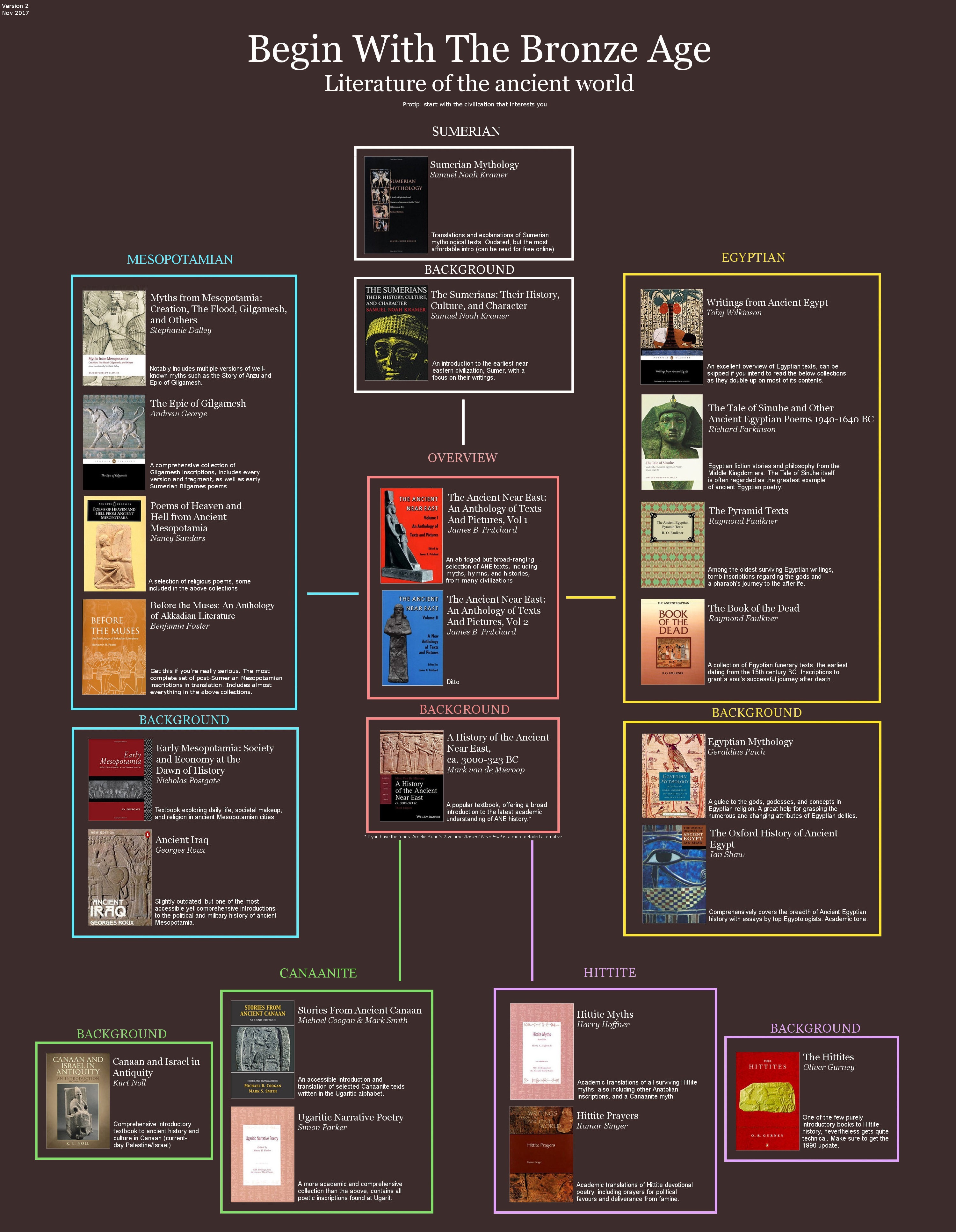
Bronze Age

The Bronze Age is a period of prehistoric human history characterized by the widespread use of bronze, an alloy of copper and tin, for tools, weapons, and other artifacts. It is typically divided into three phases: the Early Bronze Age, the Middle Bronze Age, and the Late Bronze Age. The Bronze Age follows the Neolithic period and precedes the Iron Age, lasting from around 3300 BCE to 1200 BCE in the Near East and Mediterranean regions. The development of bronze metallurgy represented a significant technological advancement, allowing for the production of stronger and more durable tools and weapons than those made of stone or copper alone. This innovation facilitated the rise of complex societies, characterized by urbanization, specialized labor, long-distance trade, and centralized political control. The Bronze Age witnessed the emergence of early civilizations, including those in Mesopotamia, Egypt, the Indus Valley, and the Aegean, which developed sophisticated systems of writing, monumental architecture, and complex social hierarchies. Trade networks expanded, connecting distant regions and facilitating the exchange of goods, ideas, and cultural influences. The Bronze Age came to an end around 1200 BCE, often associated with widespread disruptions and the collapse of many civilizations, possibly due to factors such as climate change, warfare, or the depletion of natural resources.
-

Sumerian Mythology
Samuel Noah Kramer
-

The Sumerians
Their History, Culture, and Character
Samuel Noah Kramer
-

Myths from Mesopotamia
Creation, The Flood, Gilgamesh, and others
Setphanie Dalley
-

The Epic of Gilgamesh
Andrew George
-

Poems of Heaven and Hell and Ancient
Nancy Sanders
-

Before the Muses
An Analogy of Akkadian Literature
Benjamin Foster
-

Early Mesopotamia
Society and Economy at the Dawn of History
Nicholas Postgate
-

Ancient Iraq
Georges Roux
-

Writings from Ancient Egypt
Toby Wilkinson
-

The Tale of Sinuhe and Other Ancient Egyptian Poems 1940-1640 BC
Richard Parkinson
-

The Pyramid Texts
Raymond Faulkner
-

The Book of the Dead
Raymond Faulkner
-

Egytian Mythology
Geraldine Pinch
-

The Oxford History of Ancient Egypt
Ian Shaw
-

Stories from Ancient Canaan
Michael Coogan, Mark Smith
-

Ugaritic Narrative Poetry
Simon Parker
-

Canaan and Israel in Antiquity
Kurt Noll
-

Hittite Myths
Harry Hoffner
-

Hittite Prayers
Itamar Stinger
-

The Hittites
Oliver Gurney
-

The Ancient Near East
An Anthology of Texts and Pictures, Vol1
James B. Pritchard
-

The Ancient Near East
An Anthology of Texts and Pictures, Vol2
James B. Pritchard
-

A History of the Ancient Near East ca. 3000-323 BC
Mark van de Mieroop